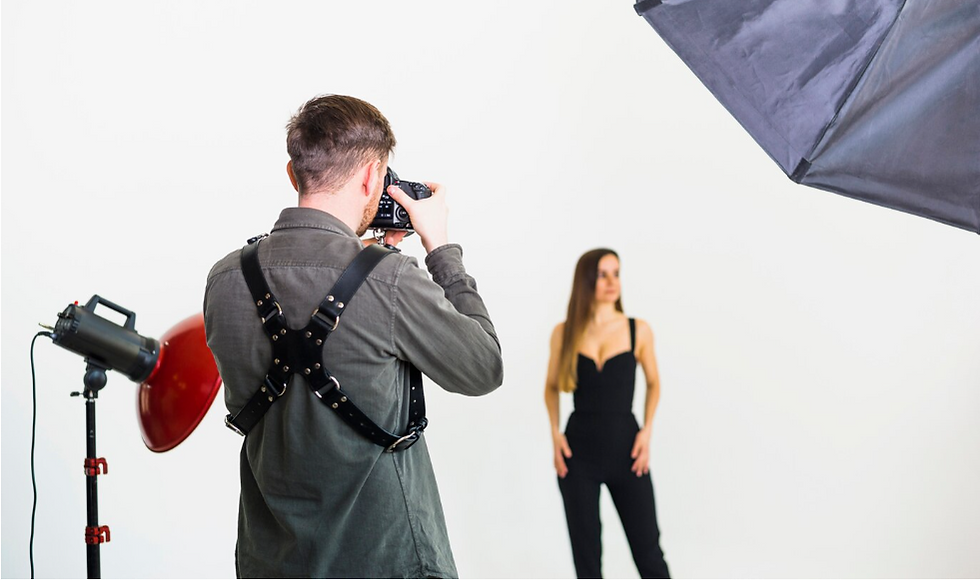Top 10 Headshot Photography Tips for Beginners
- Mamun

- Jan 9, 2024
- 3 min read

Headshot photography is a crucial aspect of professional and personal branding. It involves capturing a person's head and shoulders, highlighting their facial features, expressions, and personality. For beginners stepping into this field, understanding some fundamental tips can significantly enhance their skills and produce impressive headshots.
What are headshot photography tips?
Headshot photography tips are techniques and suggestions aimed at beginners or amateurs to improve their headshot photography skills. These tips cover various aspects, from equipment selection to posing and editing, ensuring captivating and professional results.
Importance of headshot photography
Headshots are often the first impression in professional settings like LinkedIn profiles, portfolios, or business websites. A well-crafted headshot can convey confidence, approachability, and professionalism, making it crucial in personal branding and career advancement.
Equipment
Camera selection
Investing in a good quality DSLR or mirrorless camera with interchangeable lenses allows for versatility and high-resolution images.
Lighting essentials
Understanding and utilizing natural light or artificial lighting setups like softboxes or reflectors can dramatically impact the quality of headshots.
Background considerations
Choose a background that complements the subject without being distracting. Neutral or solid colors often work well to bring focus to the subject.
Composition
Framing and angles
Experimenting with different angles and compositions can bring variety and uniqueness to headshots. Adjusting the frame to capture the subject's best features is key.
Posing techniques
Guide your subject through various poses that highlight their personality while ensuring comfort and naturalness.
Expressions and emotions
Encourage genuine expressions and emotions that reflect the subject's character, helping to create a connection with the audience.
Indoor settings
Utilize indoor spaces effectively by considering lighting, backgrounds, and props to create a controlled environment for headshot sessions.
Outdoor settings
Exploring outdoor locations offers natural lighting and diverse backgrounds, providing a different aesthetic for headshot photography.
Pre-shoot Preparation
Communicating with the subject
Establish clear communication with the subject regarding expectations, mood, and the purpose of the headshots.
Wardrobe guidance
Advise on appropriate clothing choices that complement the subject and the intended use of the headshots.
Makeup and grooming
Suggest grooming and makeup tips that enhance the subject's appearance while keeping it natural and authentic.
During the Shoot
Engaging with the subject
Create a comfortable atmosphere to bring out the subject's confidence and authentic expressions.
Experimenting with different shots
Encourage experimentation with various angles, lighting, and poses to explore different perspectives.
Post-processing
Editing software
Learn and utilize editing software like Adobe Lightroom or Photoshop to enhance and retouch headshots effectively.
Retouching and enhancing
Ensure retouching is subtle, focusing on improving rather than altering the subject's appearance. Retouching and enhancing are integral aspects of post-processing in photography, especially in headshot photography. Retouching involves refining the details within an image, such as adjusting skin tones, removing blemishes, and refining small imperfections to achieve a polished look while preserving the subject's natural features. It's crucial to approach Jewelry retouching with subtlety, ensuring that the final result appears authentic and not overly edited. On the other hand, enhancing focuses on improving overall image quality by adjusting contrast, brightness, and colors to create a visually appealing and impactful headshot. Balancing both retouching and improving techniques skillfully helps in producing professional headshots that maintain the authenticity and essence of the subject while elevating the overall quality of the photograph.
Review and Feedback
Reviewing shots
Take time to review the captured images during the shoot to make necessary adjustments and improvements.
Seeking feedback
Seek constructive feedback from the subject or peers to continually improve and grow as a headshot photographer.
Marketing Your Work
Portfolio creation
Curate a portfolio showcasing your best headshots to attract potential clients and opportunities.
Social media promotion
Utilize social media platforms to share your work, engage with the audience, and network with potential clients.
Mastering headshot photography requires practice, patience, and a deep understanding of the subject. By following these top 10 tips for beginners, one can elevate their skills and produce captivating headshots that leave a lasting impression.






Comments